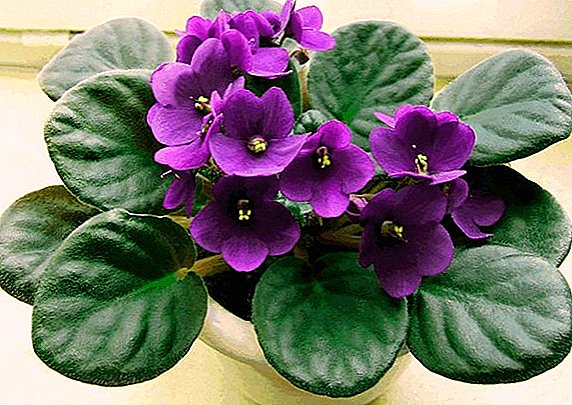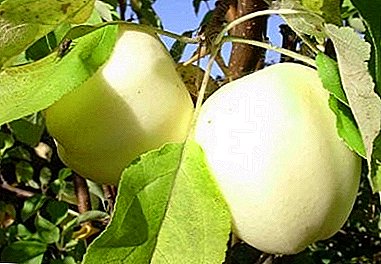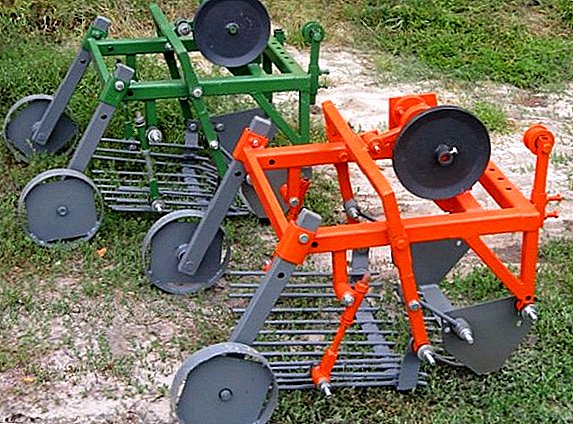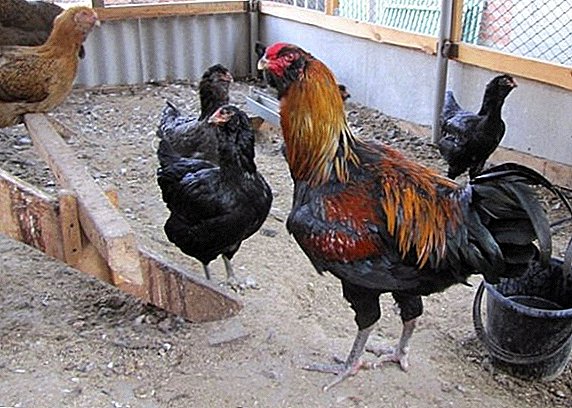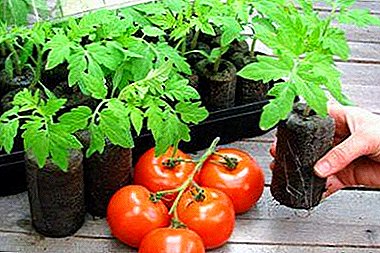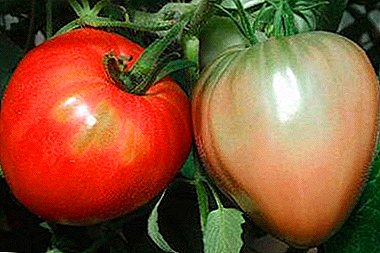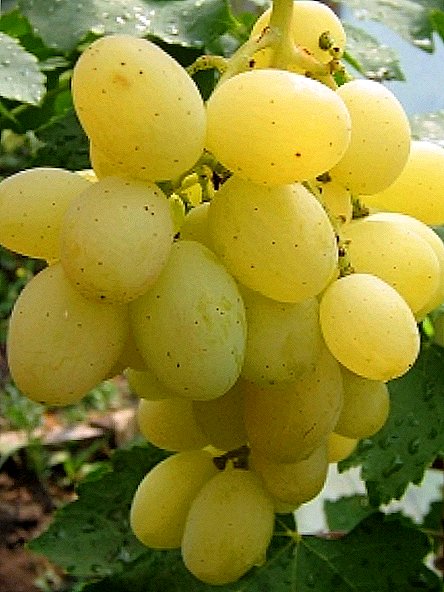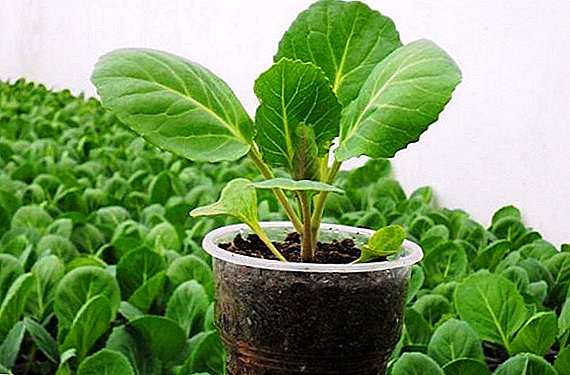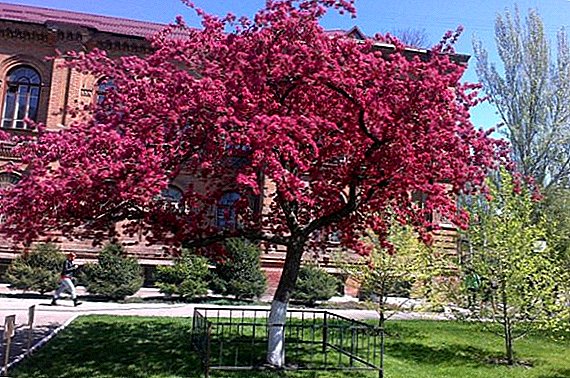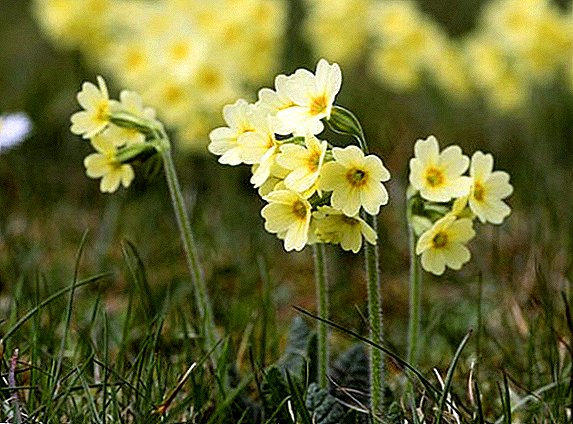 There are flowers whose appearance after a long winter sleep is awaited with particular impatience, therefore their beauty is perceived attractively and mysteriously. These plants include primrose, which is not for nothing that got its name - it speaks for itself. There is another name for it - primrose. These flowers have unusual beauty and unique beneficial properties.
There are flowers whose appearance after a long winter sleep is awaited with particular impatience, therefore their beauty is perceived attractively and mysteriously. These plants include primrose, which is not for nothing that got its name - it speaks for itself. There is another name for it - primrose. These flowers have unusual beauty and unique beneficial properties.
Description
Primrose - from among the perennial herbs of the family Primula. He received this name for flowering among the first after a long winter, although snowdrops and coltsfoot are still ahead of him in this line. Primula, starting to bloom in May, pleases with its abundant color for a relatively long time.  Its varieties mainly inhabit the Himalayas, Asia, and China; they are found in America, Africa, on the Arabian Peninsula. Approximately thirty species of plants of this family are present in Europe. It is the European part of the Russian Federation - the zone of distribution of primroses. These plants prefer well-moistened soils, which becomes the main reason for their stay on the banks of various water bodies, rivers, lakes, streams, as well as other areas with a high level of moisture.
Its varieties mainly inhabit the Himalayas, Asia, and China; they are found in America, Africa, on the Arabian Peninsula. Approximately thirty species of plants of this family are present in Europe. It is the European part of the Russian Federation - the zone of distribution of primroses. These plants prefer well-moistened soils, which becomes the main reason for their stay on the banks of various water bodies, rivers, lakes, streams, as well as other areas with a high level of moisture.
The presence of a short, kosovatogo rhizome with a large number of thin root processes is characteristic of a primrose. Its oblong, up to 15 cm long leaves have a wrinkled appearance. Primrose inflorescence in the form of an umbrella consists of five sepals, which have grown together with each other.  The height of the plant itself is different, from 10 to 80 cm. There are varieties of primrose that do not have peduncles - their flowers appear from the rosette of leaves. These plants, since ancient times, were used as a unique therapeutic tool. Also, they have long been started to be used as decorative because of the extraordinary brilliance and variety of leaves.
The height of the plant itself is different, from 10 to 80 cm. There are varieties of primrose that do not have peduncles - their flowers appear from the rosette of leaves. These plants, since ancient times, were used as a unique therapeutic tool. Also, they have long been started to be used as decorative because of the extraordinary brilliance and variety of leaves.
Small primroses from 1.5 to 4 cm may have a white, bluish, purple, yellow color of flowers. But primula (primrose) should not be confused with evening primrose, both of these plants have their own healing properties and contraindications.
Did you know? Snowdrop (galantus) is often given the name "primrose", but it has nothing to do with the Primrose family, since it belongs to the Amaryllis family. It is correct to call a snowdrop primrose conditionally, in the sense of the first harbinger of spring.

Types of primrose
There are about five hundred species of these plants; they all differ in the period of flowering, flower staining, leaves. Primroses with medicinal properties, there are several types: spring (medicinal), large-cup, high, mealy.
Primrose spring (medicinal)
Spring primrose - perennial with medicinal properties, has a height of 15 to 30 cm. It is distributed in the south of the forest territory of Russia and its part belonging to Europe. Plant with cord roots, leaves have a rounded shape, oblong, narrowed. The flowers are collected in a long, inclined to the side of the arrow with a bright yellow color and the smell of honey. The fruit is in the form of a brown box with a large number of seeds. 
Important! Primrose spring is a very valuable plant containing a lot of vitamin C, which makes it an excellent healing and vitaminized remedy for colds, coughs and nervous system problems. A significant level of ascorbic acid helps to reduce the number of free radicals in the human body and slow down the aging process.
Primrose large
In Siberia, the Caucasus and the Urals primrose large, also perennial with healing properties. According to some classifications, it is considered as a subspecies of spring. Outwardly, these plants are somewhat different: the primrose of large-capped, unlike the spring, has a largely inflated calyx, and leaves with fine pubescence.  This type of primrose is suitable for the preparation of expectorant drugs for various diseases and types of cough. Also primrose large-cup helps to improve the process of excretion of urine, soothes, relieves spasms. In order to create a means for the separation of sweat and urine, 1 tbsp. l roots and leaves, which are pre-dried, pour a glass of boiling water and infuse for several hours. Detached means taken by 1 tbsp. l three times a day. This infusion is stored no more than a day.
This type of primrose is suitable for the preparation of expectorant drugs for various diseases and types of cough. Also primrose large-cup helps to improve the process of excretion of urine, soothes, relieves spasms. In order to create a means for the separation of sweat and urine, 1 tbsp. l roots and leaves, which are pre-dried, pour a glass of boiling water and infuse for several hours. Detached means taken by 1 tbsp. l three times a day. This infusion is stored no more than a day.
Did you know? In some countries, it is believed that the girl who found the primrose first will meet her love and get married before the end of the year. Therefore, in some countries it is perceived as a flower of marriage. Particularly relevant to her in England, where primula is honored as a flower that has magic, because in it dwarfs and little fairies take shelter from the weather.
Primrose high
 A rather low perennial primrose from 10 to 40 cm, on the leaves of which there are hairs, and the leaves themselves are neatly connected to each other at the root, is called primrose high. This plant has light yellow flowers from 9 to 15 cm long, gathering into inflorescences of ten on each stem, the maximum number of inflorescences on the stem is thirty.
A rather low perennial primrose from 10 to 40 cm, on the leaves of which there are hairs, and the leaves themselves are neatly connected to each other at the root, is called primrose high. This plant has light yellow flowers from 9 to 15 cm long, gathering into inflorescences of ten on each stem, the maximum number of inflorescences on the stem is thirty.
Primrose high occurs in Asia Minor, Transcaucasia, Altai, Siberia, in moist areas in the shade. In Russia, a wild primrose of this species is practically not found. The composition and properties of the primrose high and spring are practically no different, therefore, the indications for their use are also no different.
Mealy primrose
The plant has fibrous roots, peduncles in the form of an arrow with flowers-umbrellas and is never higher than 20 cm. It is covered with a powdery-white, slightly yellowish bloom, which is present in a significant amount on the underside of the leaves. This type of primrose differs from other types in a variety of colors during flowering: bright and dark lilac, pink in combination with purple, rarely come across white flowers. Distinctive color feature mealy primrose is the presence of a bright "eye" the size of one centimeter in the center of the flower.  This species is most common in the north of that part of Russia, which belongs to Europe; it also grows in the south of Siberia and the Far East. The leaves of this primrose contain a lot of vitamin C. Differently prepared means of powdery primrose is used as a folk remedy for dermatitis, it is rubbed into the scalp for better hair growth. In Tibet, this primrose treated tumors.
This species is most common in the north of that part of Russia, which belongs to Europe; it also grows in the south of Siberia and the Far East. The leaves of this primrose contain a lot of vitamin C. Differently prepared means of powdery primrose is used as a folk remedy for dermatitis, it is rubbed into the scalp for better hair growth. In Tibet, this primrose treated tumors.
Did you know? In ancient Greece, primrose was called the "flower of the twelve gods" and treated him like the flower of Olympus. Legend says that the gods turned the paralysos youth suffering from paralysis into him.
Composition
The composition of primrose includes many vitamins and minerals. A pair of its leaflets taken as food can satisfy the human body’s need for vitamin C per day. In addition, primrose contains provitamin A (carotene), vitamin E, manganese salts, saponins, flavonoids, glycosides, essential oils.
Properties primrose
Primrose has many medicinal properties, improving the processes of urination, sweating, expectoration. It also has antispasmodic, analgesic and tonic effect on the human body. The remedies from this plant are capable of soothing and toning, and their vitamin composition makes the primula an almost unique plant.
Due to the presence of ascorbic acid in the primrose composition, funds from it normalize the central nervous system, blood formation and absorption of iron, neutralize free radicals, stimulate the endocrine system, remove unnecessary cholesterol from the body, cleanse and strengthen vessels, heal wounds more intensively, strengthen the immune system.  Carotene provides the skin and mucous membranes with a healthy appearance, stimulates skin regeneration, improves immunity, helps regulate hormone levels, and normalizes the functioning of the central nervous system. Thanks to him, the eyes function better, and the bones grow and strengthen more intensively, which is a positive moment for the harmonious development of the musculoskeletal system.
Carotene provides the skin and mucous membranes with a healthy appearance, stimulates skin regeneration, improves immunity, helps regulate hormone levels, and normalizes the functioning of the central nervous system. Thanks to him, the eyes function better, and the bones grow and strengthen more intensively, which is a positive moment for the harmonious development of the musculoskeletal system.
Vitamin E contained in primrose promotes wound healing with minimal scar formation, reduces the level of thrombus formation, and also resolves blood clots that have formed, improves the quality of functioning of the reproductive system, and eliminates problems during menopause.
Manganese salts contribute to the formation of bone and connective tissue, regulate lipid metabolism, help synthesize cholesterol, insulin, thyroid hormone, and also more effectively absorb and transform carbohydrates.  Saponins, enhancing the secretion of glands, contribute to the dilution and easy withdrawal of sputum from the bronchi, relieve inflammation; also inhibit DNA synthesis in tumor cells, preventing the processes of their reproduction; strengthen the functions of hormones, regulate metabolic, water-salt and mineral metabolism.
Saponins, enhancing the secretion of glands, contribute to the dilution and easy withdrawal of sputum from the bronchi, relieve inflammation; also inhibit DNA synthesis in tumor cells, preventing the processes of their reproduction; strengthen the functions of hormones, regulate metabolic, water-salt and mineral metabolism.
Important! Coltsfoot contains carotenoids and mucus, which neutralize the processes of inflammation and reduce redness of the throat. Like primrose, it also contains saponins. Combined in one tool, coltsfoot and primula strengthen each other. Together with other numerous medicinal herbs, they are components of the chest collection.
Flavonoids, strengthening blood vessels and capillaries, protect the body from pathogenic microbes, contribute to a more effective effect of vitamin C, strengthen resistance to infections, neutralize free radicals and toxins, eliminate edemas and inflammation, prevent the formation of bad cholesterol and the development of various types of cancer, normalize digestive processes , reduce the manifestations of allergies, increase the level of mental and physical activity.  Glycosides soothe the nervous system, normalize blood circulation and heart activity, reduce blood pressure. Essential oils promote rapid healing of wounds, pain relief and separation of mucus, soften cough, soothe the nervous system, normalize the condition of the heart, blood vessels, stomach, intestines.
Glycosides soothe the nervous system, normalize blood circulation and heart activity, reduce blood pressure. Essential oils promote rapid healing of wounds, pain relief and separation of mucus, soften cough, soothe the nervous system, normalize the condition of the heart, blood vessels, stomach, intestines.
Primrose in medicine
The use of primrose as a medicine is common in traditional medicine of many nations.
Tibet healers today use it for blood diseases, as well as to suppress the growth of tumors and accelerate healing processes. Primrose preparations treat a huge number of disorders, as well as use them for prophylactic purposes. They help in violation of the blood circulation of the brain, heart disease, cough, colds, inflammation, neuralgia, edema, eye and urinary system diseases, migraines, insomnia and many other ailments.
Primrose roots are an excellent tonic, with the effect of sweating and urination.  Decoctions and infusions of these roots help to facilitate the process of expectoration of sputum and increase the secretion of mucous glands in bronchitis. Primrose leaves are useful as a means rich in vitamins, with their significant deficiency, as well as in violation of appetite and diseases of the gums. For external use, primrose leaves are applied to damage.
Decoctions and infusions of these roots help to facilitate the process of expectoration of sputum and increase the secretion of mucous glands in bronchitis. Primrose leaves are useful as a means rich in vitamins, with their significant deficiency, as well as in violation of appetite and diseases of the gums. For external use, primrose leaves are applied to damage.
Important! A decoction of primrose flowers and hawthorn is very useful with frequent heartbeat.
Primrose cough
Primrose preparations are excellent for treating cough due to the large number of saponins, which soften the cough and contribute to the release of sputum in dry and not coughing for a long time.  Such remedies are also recommended in case of “senile cough”, which occurs when the force of the heart decreases, thus the supply of blood to the lungs worsens and a strong regular cough appears, which is very difficult to stop. In this case, it is necessary not only to treat the respiratory organs, but also to accelerate blood circulation, as well as to eliminate all excess water from the body. To do this, a few leaves of primrose need to pour 200 ml of boiling water and insist a couple of hours, take 1/3 cup three times a day.
Such remedies are also recommended in case of “senile cough”, which occurs when the force of the heart decreases, thus the supply of blood to the lungs worsens and a strong regular cough appears, which is very difficult to stop. In this case, it is necessary not only to treat the respiratory organs, but also to accelerate blood circulation, as well as to eliminate all excess water from the body. To do this, a few leaves of primrose need to pour 200 ml of boiling water and insist a couple of hours, take 1/3 cup three times a day.
Effective cough medicine is also verbena officinalis, bitter wormwood, white marmala, saxifrage, horseradish, cherry plum, raspberry, woodberry, rutabaga, nivyanik.
Primrose during pregnancy
During pregnancy, primrose drugs can not be taken: they can provoke a miscarriage, causing stimulation of uterine contraction.
Cough syrup with primrose
Primrose syrup is a drug to facilitate the process of expectoration with a high level of effectiveness. It is used when coughing in the dry form, accompanying tracheitis, acute respiratory diseases, bronchitis. 1 tsp shredded roots boil in half a glass of water for 5 minutes and mix with honey to make a viscous mass. Take 1 tsp. four times a day.  Such a syrup, with a brown tint and a peculiar smell, can be bought at the pharmacy.
Such a syrup, with a brown tint and a peculiar smell, can be bought at the pharmacy.
Did you know? Another legend says that once the apostle Peter dropped the keys to the gates of heaven, and in the place of their fall, beautiful flowers appeared on the ground, resembling a bunch of keys. Therefore, another name for primrose - "keys".
Decoction
Primrose decoction works well with bronchitis, pneumonia and whooping cough: 20 g of crushed raw materials pour 200 ml of water and boil for 20 minutes. After this, the broth is filtered and consumed one tablespoon several times a day.
Also cough remedy can be prepared on the basis of the roots: 1 tbsp. l the roots of the plant, previously crushed, pour 200 ml of water, close and put in a water bath for 30 minutes. Then the broth is cooled and taken several times a day, 70 ml.  Another decoction of the roots: 20 g of raw materials per 400 ml of boiled hot water, infused for 20 minutes. This tool is recommended to use 100 ml no more than four times a day, with diseases of the respiratory organs, kidneys, rheumatism, gout.
Another decoction of the roots: 20 g of raw materials per 400 ml of boiled hot water, infused for 20 minutes. This tool is recommended to use 100 ml no more than four times a day, with diseases of the respiratory organs, kidneys, rheumatism, gout.
Infusion
Well helps for cough infusion of leaves: 2 tbsp. l crushed leaves pour 0.5 liters of boiling water and insist. This amount of infusion should be consumed per day, regardless of the meal.
Improvement of gastric secretion and metabolic processes, the replenishment of vitamins occur when using infusion from a part of primrose growing above the ground. Flowers or any other part of a primrose weighing 25 g pour 200 ml of boiling water, insist 30 minutes, filter and use 2 tbsp. l three times a day.
Flowers or any other part of a primrose weighing 25 g pour 200 ml of boiling water, insist 30 minutes, filter and use 2 tbsp. l three times a day.
Tincture
This option of primrose, as tincture, helps to get rid of headaches, dizziness, lack of sleep and appetite, loss of strength, rheumatism. It is necessary to take 2 tbsp. l roots and leaves, pour a glass of 70% alcohol and let it brew for about 12 days in a place without light, shaking occasionally. After which the alcohol is drained, squeeze the leaves and roots and strain the liquid. When pain in the joints is used by rubbing and compresses, with the remaining indications - a couple of times a day, drink 10-15 drops.
Primrose oil
 Primrose oil has a tonic effect, increasing immunity and improving the functioning of the heart and blood vessels. The flowers are completely covered with vegetable oil and left in a covered dish for several weeks in the sunlight. Then filter and squeeze. Oil, which was obtained, poured another, equivalent to the first number of flowers. The procedure is completely repeated. The finished oil is poured into dishes, which will be stored for no more than one year. Take this tool a couple of times a day, 2 ml; best in the morning and lunchtime.
Primrose oil has a tonic effect, increasing immunity and improving the functioning of the heart and blood vessels. The flowers are completely covered with vegetable oil and left in a covered dish for several weeks in the sunlight. Then filter and squeeze. Oil, which was obtained, poured another, equivalent to the first number of flowers. The procedure is completely repeated. The finished oil is poured into dishes, which will be stored for no more than one year. Take this tool a couple of times a day, 2 ml; best in the morning and lunchtime.
Herbion primrose syrup
Herbion syrup is a unique herbal medicine that promotes productive expectoration and has an anti-inflammatory effect. It is used as an adjunct in a complex of therapeutic agents. Helps with inflammation of the trachea and bronchi, with acute respiratory infections with irritation of the respiratory mucosa, to get rid of the incessant cough. It is recommended to apply this syrup three times a day after meals: for adults - 15 ml, for children from fourteen years old - 10 ml, from five to fourteen - 5 ml, from two and a half to five - 2.5 ml.  The tool is recommended to drink with warm water or tea. Duration of reception of syrup - from five to seven days. Adverse reactions to syrup almost do not occur, but there may be an upset stomach, sverbezh, nausea, and more. As a rule, this is due to an unjustified increase in dose.
The tool is recommended to drink with warm water or tea. Duration of reception of syrup - from five to seven days. Adverse reactions to syrup almost do not occur, but there may be an upset stomach, sverbezh, nausea, and more. As a rule, this is due to an unjustified increase in dose.
Contraindications
Primrose has many beneficial properties, but, like most drugs, it has contraindications: allergy to primrose preparations, the presence of ulcers. It is a safe and harmless plant subject to the instructions for its use.
Primrose collection
All parts of the primrose are of medicinal value, so you need to know exactly when you can collect them so that the properties of the plant are preserved in the best possible way.  It is recommended to prepare the leaves when the plant blooms, to dry immediately and quickly enough in the sun or in special drying devices at a temperature of 50-60 ° C (as a slow drying process, the level of ascorbic acid in raw materials decreases). После процесса сушки зеленоватым с серым оттенком листьям свойственен запах мёда и слегка сладкий вкус, переходящий в послевкусии на горький привкус.
It is recommended to prepare the leaves when the plant blooms, to dry immediately and quickly enough in the sun or in special drying devices at a temperature of 50-60 ° C (as a slow drying process, the level of ascorbic acid in raw materials decreases). После процесса сушки зеленоватым с серым оттенком листьям свойственен запах мёда и слегка сладкий вкус, переходящий в послевкусии на горький привкус.
Leaves need to be torn by hands, leaving half on a stalk for the subsequent flowering and fruiting of a primrose. From mid-spring to its end, you can collect flowers without cups, they are dried in the air, after which they should have a subtle smell and sweetish taste.
The roots, as well as the rhizomes, are recommended to be dug out in the fall after the plant has withered, or in the spring before its flowering. They need to shake off, rinse, give a little wilting, then dry out at a temperature not higher than 60 ° C in a dryer or in natural conditions. The rhizomes, which have dried up, have a brown color with a reddish tinge, the roots are whitish in color, have a slight odor and a bitter taste. Keep the dried plant should be in paper bags or fabric in a room with a good level of ventilation. 
Important! When collecting a primrose, one should not forget that it is listed in the Red Book.
Primrose Recipes
Primrose is used not only as a medicinal plant, it is also successfully used in cooking for cooking various salads.
To prepare a primrose salad, you need to take three or four leaves, green onions, sorrel, and three boiled eggs. All cut, mix, salt, pepper and season with sour cream or vegetable oil. Another option is the salad of primrose and beet: 40 g of green onions, 120 g of leaves of primrose, 100 g of beets cut, salt and season with sour cream. Before serving, such a salad should stand for a while in the fridge. We found out that primrose is a unique plant with an extraordinary amount of useful properties that can help with various ailments. To use or not means of primrose - you decide, but to get acquainted with its capabilities will not be superfluous. By following simple rules, you can easily and quickly improve your health with the help of this gift of nature.


